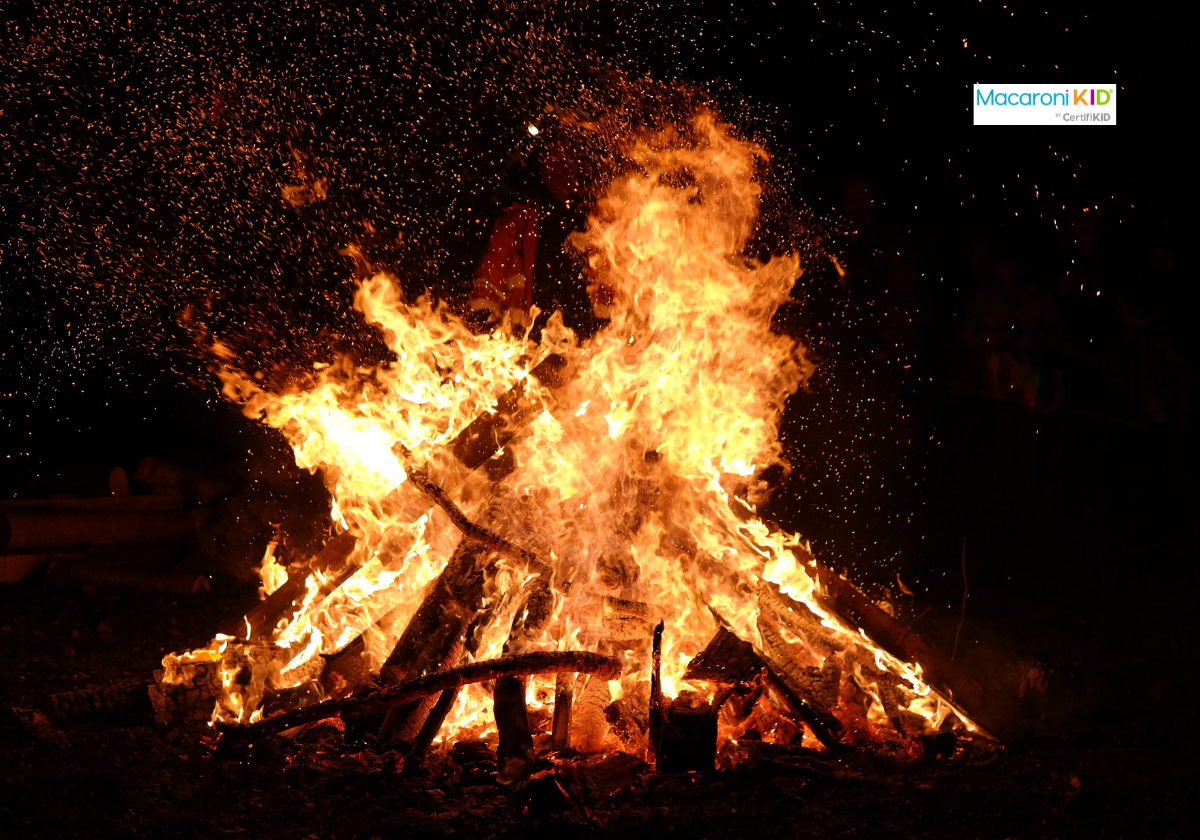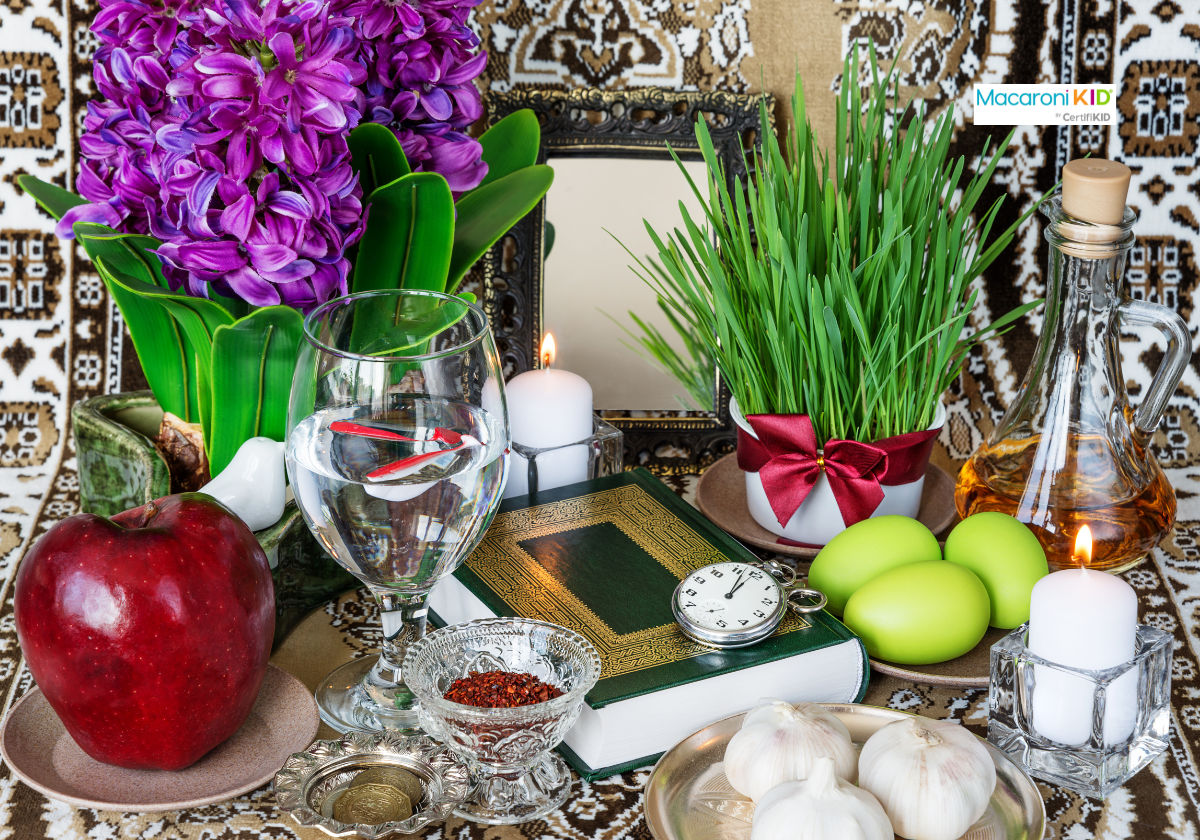It is almost springtime, which means it is also time for Nowruz, the first day of the New Year in Iran and other countries with a Persian cultural influence, such as Afghanistan, Iraq, and India. More than 300 million people in the world celebrate Nowruz.
Nowruz means “new day” and takes place on the first day of spring. Nowruz begins at the moment of the vernal equinox when the earth is tilted so that there is an equal number of hours in the day and at night.
Popular Nowruz greetings:
Nowruz piruz baad:
May (your) Nowruz be victorious
Nowruz mobarak
Happy Nowruz
ʿAyd mobarak
Happy holidays
An ancient holiday, Nowruz is celebrated in unique ways in each region and city.
In Iran, where the holiday originated more than 3,000 years ago, Nowruz festivities begin the weeks before and last for 13 days after people ring in the new year. In anticipation of the new year, people shop for gifts, spring clean their homes, and buy new clothes.
 |
When the vernal equinox occurs, families wish each other a happy Nowruz. After, adults give money to the children in the family.
After a delicious meal of sabzi-polo māhi (fried fish served with a garlic and herb infused pilaf), people visit relatives and friends, bring them gifts, and wish them a happy new year.
Schools, government offices, and some businesses are closed during the 13 days of festivities so many families will take the opportunity to travel around the country visiting family, friends, and ancient sites.
Here is a closer look at the Nowruz festivals in Iran:
Chāhārshanbeh Surī
Iranians celebrate Chāhārshanbeh Surī, Red Wednesday, a bonfire festival on the last Wednesday evening of the year. People light a bonfire and jump over it, asking the fire to keep them healthy during the year by chanting zardi-e man be to, sorkhi-e to be man (literally, “my yellowness to you, your redness to me"). This is based on an ancient belief that fire is a purifying element.
In the hours leading up to Nowruz, street performers can be seen walking about, counting the hours and minutes until the new year.
 Jens Mahnke | Canva Jens Mahnke | Canva |
Sofreh-ye Haft Seen
The most recognizable aspect of Nowruz is the Sofreh-ye Haft Seen (The Seven S-Spread). The sofreh itself is a patterned fabric and symbolic items that are believed to bring good luck, health, and prosperity are arranged on it. You will usually see a mirror, votives, sweets, colored eggs, flowers (tulips and hyacinth), and goldfish.
The seven (haft) most important symbolic items are those that begin with the letter “s” (seen), hence its name, Sofreh-ye Haft Seen. These items are sprouted greens (sabzeh), apples (seeb), garlic (seer), coins (sekeh), vinegar (serkeh), sumac (somaq), and germinated wheat-sprout (samanu). A plate of mixed green herbs (sabzi), walnuts, and goat cheese can complete the Sofreh-ye Haft Seen and is eaten as a light snack after the new year has begun.
Families gather around the Sofreh-ye Haft Seen and read famous poems, passages from the famous epic, the Shāhnāmeh (Book of Kings), or verses from the Qurān. As the new year approaches, the countdown begins.
 Epitavi | Canva Epitavi | Canva |
Sizdeh be dar
It is generally considered unlucky to stay indoors on the 13th day of the new year, so families will gather together at a park and picnic the whole day. People will bring whole meals or beef-cutlet sandwiches to enjoy with tea, mixed dried fruits and nuts (ajeel), and fresh fruits. Adults play popular card and board games such as pasur (a fishing card game) and takht-e nard (backgammon) while children play soccer. Usually, before families return home, they will toss the sprouted greens (sabzeh) into a nearby body of water and release goldfish.
 rimmabondarenko | Canva rimmabondarenko | Canva |
Ghazzal Dabiri is an Iranist who has written and published on medieval tales of kinship, kingship, and sainthood. She holds a PhD from UCLA and has taught Persian language, culture, and literature at various institutions. Her most recent publications are the edited volumes Narrating Power and Authority in Late Antique and Medieval Hagiography across East and West (Brepols) and Thecla and Medieval Sainthood: The Acts of Paul and Thecla in Eastern and Western Hagiography (Cambridge University Press) (co-edited).
This article originally appeared in Macaroni KID Coral Springs, Fla.



